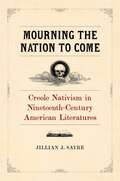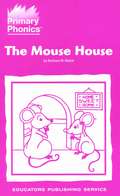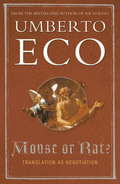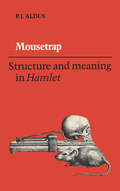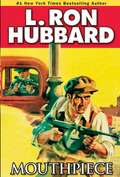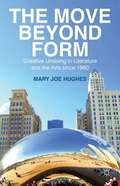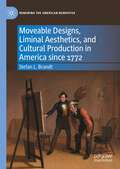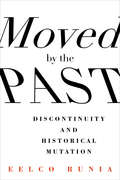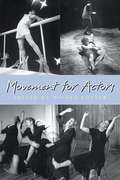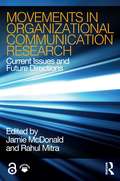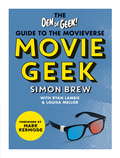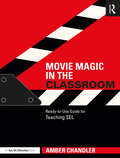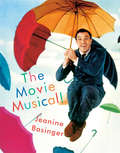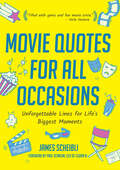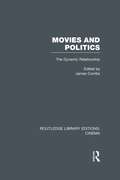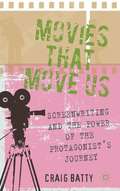- Table View
- List View
Mourning the Nation: Indian Cinema in the Wake of Partition
by Bhaskar SarkarWhat remains of the "national" when the nation unravels at the birth of the independent state? The political truncation of India at the end of British colonial rule in 1947 led to a social cataclysm in which roughly one million people died and ten to twelve million were displaced. Combining film studies, trauma theory, and South Asian cultural history, Bhaskar Sarkar follows the shifting traces of this event in Indian cinema over the next six decades. He argues that Partition remains a wound in the collective psyche of South Asia and that its representation on screen enables forms of historical engagement that are largely opaque to standard historiography. Sarkar tracks the initial reticence to engage with the trauma of 1947 and the subsequent emergence of a strong Partition discourse, revealing both the silence and the eventual "return of the repressed" as strands of one complex process. Connecting the relative silence of the early decades after Partition to a project of postcolonial nation-building and to trauma's disjunctive temporal structure, Sarkar develops an allegorical reading of the silence as a form of mourning. He relates the proliferation of explicit Partition narratives in films made since the mid-1980s to disillusionment with post-independence achievements, and he discusses how current cinematic memorializations of 1947 are influenced by economic liberalization and the rise of a Hindu-chauvinist nationalism. Traversing Hindi and Bengali commercial cinema, art cinema, and television, Sarkar provides a history of Indian cinema that interrogates the national (a central category organizing cinema studies) and participates in a wider process of mourning the modernist promises of the nation form.
Mourning the Nation to Come: Creole Nativism in Nineteenth-Century American Literatures
by Jillian SayreIn Mourning the Nation to Come, Jillian J. Sayre offers a comparative study of early national literature and culture in the United States, Brazil, and Spanish America that theorizes New World nationalism as grounded in cultures of the dead and commemorative acts of mourning. Sayre argues that popular historical romances unified communities of creole readers by giving them lost love objects they could mourn together, allowing citizens of newly formed nations to feel as one. To trace the emergence of New World nationalism, Mourning the Nation to Come focuses on the genre of historical writings often gathered under the title of “Indianist romance,” which engage Native American history in order to translate Indigenous claims to the land as iterations of creole nativism. These historical narratives foresee present communities, anticipating the nation as the inevitable realization or fulfillment of a prophecy buried in the past. Sayre uncovers prophetic, nation-building narrative in texts from across the Americas, including the Book of Mormon and works of fiction, poetry, and oratory by José de Alencar, William Apess, Lydia Maria Child, James Fenimore Cooper, Herman Melville, and José Joaquín de Olmedo, among others. By using cultural theory to interpret a transnational archive of literary works, Mourning the Nation to Come elucidates the structuring principles of New World nationalism located in prophetic narratives and acts of commemoration.
Mouse
by Zebo LudvicekA hungry mouse discovers the alphabet, nibble by nibble, in this playful tale. When the letter M comes upon a hungry little mouse with a delicious-looking cherry, he can't help but ask for a bite. The mouse reluctantly agrees, only for the M to devour the entire thing! In exchange, the M offers the mouse some of itself, but after a few bites the M has suddenly become an N. So begins the mouse's journey through the many letters of the alphabet thanks to some creative nibbling and imaginative illustrations from debut author/illustrator Zebo Ludvicek.
Mouse or Rat?: Translation as Negotiation
by Prof Umberto EcoFrom the world-famous author of THE NAME OF THE ROSE, an illuminating and humorous study on the pleasures and pitfalls of translation.'Translation is always a shift, not between two languages but between two cultures. A translator must take into account rules that are not strictly linguistic but, broadly speaking, cultural.'Umberto Eco is of the world's most brilliant and entertaining writers on literature and language. In this accessible and dazzling study, he turns his eye on the subject of translations and the problems the differences between cultures can cause. The book is full of little gems about mistranslations and misunderstandings.For example when you put 'Studies in the logic of Charles Sanders Peirce' through an internet translation machine, it becomes 'Studies in the logic of the Charles of sandpaper grinding machines Peirce'. In Italian 'ratto' has no connotation of 'contemptible person' but denotes speed ('you dirty rat' could take on a whole new meaning!)What could be a weighty subject is never dull, fired by Eco's immense wit and erudition, providing an entertaining read that illuminates the process of negotiation that all translators must make.
Mouse or Rat?: Translation As Negotiation
by Umberto Eco'Translation is always a shift,not between two languages but between two cultures. A translator must take into account rules that are not strictly linguistic but, broadly speaking, cultural.' Umberto Eco is of the world's most brilliant and entertaining writers on literature and language. In this accessible and dazzling study, he turns his eye on the subject of translations and the problems the differences between cultures can cause. The book is full of little gems about mistranslations and misunderstandings.For example when you put 'Studies in the logic of Charles Sanders Peirce' through an internet translation machine, it becomes 'Studies in the logic of the Charles of sandpaper grinding machines Peirce'. In Italian 'ratto' has no connotation of 'contemptible person' but denotes speed ('you dirty rat' could take on a whole new meaning!) What could be a weighty subject is never dull, fired by Eco's immense wit and erudition, providing an entertaining read that illuminates the process of negotation that all translators must make.
Mousetrap: Structure and Meaning in Hamlet
by P. J. AldusThere is scarcely an element of Hamlet that has not received attention many times, yet both general reader and sophisticated critic would generally agree that the character of Hamlet and the full meanings of the play remain mysteries. No less a puzzle is the art of Hamlet, for, while the form of the art is elusive, the feeling of essential meaning is strong. Professor Aldus hopes to enlarge our understanding of Hamlet and our appreciation of Shakespeare as a conscious artist of great subtlety by studying the play's dramatic structure in the light of Aristotle's Poetics and its meaning as literary myth in the light of Plato's Phaedrus. This is a study of Hamlet as literary myth, a figurative mode of art in which structure is basic; yet primal myth, myth in the larger, non-literary sense, becomes part of it too, because the substance of Hamlet seems to be of this kind. Professor Aldus's reading of Hamlet is both radically new and decidedly provocative. A great deal of very careful inquiry has gone into the unearthing of connections which at first sight often seem improbable and tenuous, but which, one comes to find, have an illuminating total unity. Future commentators may not accept all that Professor Aldus has to say about, for example, Ophelia's crown of flowers, but they will hardly be able to ignore it.
The Mousetrap: 70th Anniversary Edition
by Agatha Christie'Even more thrilling than the plot is the atmosphere of shuddering suspense . . . No one brews it better than Agatha Christie' Daily ExpressFor 70 years, Agatha Christie's The Mousetrap has kept millions of people, from every corner of the globe, on the edge of their seats, and it continues to be a sell-out hit of London theatre. This brand new edition of the world's longest-running play will contain a new introduction by Sophie Hannah, bestselling author of the authorised Agatha Christie Poirot continuation novels, as well as the official play script and a host of exclusive material from the show's archives. As news spreads of a murder in London, a group of seven strangers find themselves in a remote countryside guesthouse. When a police sergeant arrives, the guests discover - to their horror - that a killer is in their midst. One by one, the suspicious characters reveal their sordid pasts. Which one is the murderer? Who will be their next victim? And can you solve this world-famous mystery for yourself?This beautiful 70th anniversary edition will contain an introduction by Sophie Hannah, the official playscript, an exclusive interview with producer Adam Spiegel, a treasure trove of letters, speeches, photographs, and other fascinating insights into the making of this iconic play.
The Mousetrap: 70th Anniversary Edition
by Agatha Christie'Even more thrilling than the plot is the atmosphere of shuddering suspense . . . No one brews it better than Agatha Christie' Daily ExpressFor 70 years, Agatha Christie's The Mousetrap has kept millions of people, from every corner of the globe, on the edge of their seats, and it continues to be a sell-out hit of London theatre. This brand new edition of the world's longest-running play will contain a new introduction by Sophie Hannah, bestselling author of the authorised Agatha Christie Poirot continuation novels, as well as the official play script and a host of exclusive material from the show's archives. As news spreads of a murder in London, a group of seven strangers find themselves in a remote countryside guesthouse. When a police sergeant arrives, the guests discover - to their horror - that a killer is in their midst. One by one, the suspicious characters reveal their sordid pasts. Which one is the murderer? Who will be their next victim? And can you solve this world-famous mystery for yourself?This beautiful 70th anniversary edition will contain an introduction by Sophie Hannah, the official playscript, an exclusive interview with producer Adam Spiegel, a treasure trove of letters, speeches, photographs, and other fascinating insights into the making of this iconic play.
The Mouth That Begs: Hunger, Cannibalism, and the Politics of Eating in Modern China
by Gang YueThe Chinese ideogram chi is far richer in connotation than the equivalent English verb "to eat." Chi can also be read as "the mouth that begs for food and words." A concept manifest in the twentieth-century Chinese political reality of revolution and massacre, chi suggests a narrative of desire that moves from lack to satiation and back again. In China such fundamental acts as eating or refusing to eat can carry enormous symbolic weight. This book examines the twentieth-century Chinese political experience as it is represented in literature through hunger, cooking, eating, and cannibalizing. At the core of Gang Yue's argument lies the premise that the discourse surrounding the most universal of basic human acts--eating--is a culturally specific one. Yue's discussion begins with a brief look at ancient Chinese alimentary writing and then moves on to its main concern: the exploration and textual analysis of themes of eating in modern Chinese literature from the May Fourth period through the post-Tiananmen era. The broad historical scope of this volume illustrates how widely applicable eating-related metaphors can be. For instance, Yue shows how cannibalism symbolizes old China under European colonization in the writing of Lu Xun. In Mo Yan's 1992 novel Liquorland, however, cannibalism becomes the symbol of overindulgent consumerism. Yue considers other writers as well, such as Shen Congwen, Wang Ruowang, Lu Wenfu, Zhang Zianliang, Ah Cheng, Zheng Yi, and Liu Zhenyun. A special section devoted to women writers includes a chapter on Xiao Hong, Wang Anyi, and Li Ang, and another on the Chinese-American women writers Jade Snow Wong, Maxine Hong Kingston, and Amy Tan. Throughout, the author compares and contrasts the work of these writers with similarly themed Western literature, weaving a personal and political semiotics of eating. The Mouth That Begs will interest sinologists, literary critics, anthropologists, cultural studies scholars, and everyone curious about the semiotics of food.
Mouthpiece
by L. Ron HubbardUnlock your inner Sherlock. It had been a long time since Mat Lawrence went to the city. Only something urgent could take him from his job deep in the desert managing construction of a mammoth power dam . . . something as urgent and shocking as the grisly murder of his father. His father dying wasn't a complete surprise to him; the old man was a big-time gangster. Straight-laced and hard-working, Mat had wanted nothing to do with such vices. But he does share at least one family trait, a temper that propels him to exact revenge in the traditional family style.And so, with the "help" of his father's fast-talking criminal attorney, Mat goes after the culprits. But bullets, lies and bedlam follow when he finds himself neck-deep in trouble trying to single-handedly track down his father's killers and a million dollars gone missing. ALSO INCLUDES THE MYSTERY STORIES "FLAME CITY", "CALLING SQUAD CARS" AND "THE GREASE SPOT""...is pure entertainment from first page to last with that L. Ron Hubbard touch giving this tale an enduring reading engagement from beginning to end." --Midwest Book Review
The Move beyond Form
by Mary Joe HughesFictional narratives of the late twentieth century often cross boundaries. This study argues that the undoing of structure in postmodern art form demands a different way of thinking and represents a commentary on the material and social conditions of the late twentieth century and beyond.
Move On: Adventures in the Real World
by Linda EllerbeeEllerbee gives details on how she moved from working with ABC to CNN.
Moveable Designs, Liminal Aesthetics, and Cultural Production in America since 1772 (Renewing the American Narrative)
by Stefan L. BrandtThe book explores the liminal aesthetics of U.S. cultural and literary practice. Interrogating the notion of a presumptive unity of the American experience, Moveable Designs argues that inner conflict, divisiveness, and contradiction are integral to the nation’s cultural designs, themes, and motifs. The study suggests that U.S. literary and cultural practice is permeated by ‘moveable designs’—flexible, yet constant features of hegemonial practice that constitute an integral element of American national self-fashioning. The naturally pervasive liminality of U.S. cultural production is the key to understanding the resilience of American culture. Moveable Designs looks at artistic expressions across various media types (literature, paintings, film, television), seeking to illuminate critical phases of U.S. American literature and culture—from the revolutionary years to the movements of romanticism, realism, and modernism, up to the postmodern era. It combines a wide array of approaches, from cultural history and social anthropology to phenomenology. Connecting an analysis of literary and cultural texts with approaches from design theory, the book proposes a new way of understanding American culture as design. It is one of the unique characteristics of American culture that it creates—or, rather, designs—potency out of its inner conflicts and apparent disunities. That which we describe as an identifiable ‘American identity’ is actually the product of highly vulnerable, alternating processes of dissolution and self-affirmation.
Moved by the Past: Discontinuity and Historical Mutation (European Perspectives: A Series in Social Thought and Cultural Criticism)
by Eelco RuniaHistorians go to great lengths to avoid confronting discontinuity, searching for explanations as to why such events as the fall of the Berlin Wall, George W. Bush's invasion of Iraq, and the introduction of the euro logically develop from what came before. Moved by the Past radically breaks with this tradition of predating the past, incites us to fully acknowledge the discontinuous nature of discontinuities, and proposes to use the fact that history is propelled by unforeseeable leaps and bounds as a starting point for a truly evolutionary conception of history. Integrating research from a variety of disciplines, Eelco Runia identifies two modes of being "moved by the past": regressive and revolutionary. In the regressive mode, the past may either overwhelm us—as in nostalgia—or provoke us to act out what we believe to be solidly dead. When we are moved by the past in a revolutionary sense, we may be said to embody history: we burn our bridges behind us and create accomplished facts we have no choice but to live up to. In the final thesis of Moved by the Past, humans energize their own evolution by habitually creating situations ("catastrophes" or sublime historical events) that put a premium on mutations. This book therefore illuminates how every now and then we chase ourselves away from what we were and force ourselves to become what we are. Proposing a simple yet radical change in perspective, Runia profoundly reorients how we think and theorize about history.
Movement for Actors
by Nicole PotterTeachers and practitioners offer actors, directors, and students both practical suggestions and inspiration on how to tell the story through the body. Body basics, beyond glove and fan, and schools of thought are among the themes.
Movements in Organizational Communication Research: Current Issues and Future Directions
by Jamie McDonald Rahul MitraMovements in Organizational Communication Research is an essential resource for anyone wishing to become familiar with the current state of organizational communication research and key trends in the field. Seasoned organizational communication scholars will find that the book provides unique insights by way of the intergenerational dialogue that is found in the book, as well as the contributors’ stories about their scholarly trajectories. Those who are new to the field will find that the book enables them to familiarize themselves with the field and become a part of the organizational communication scholarly community in an inviting and accessible way. Key features of the book include: A review of current issues and future directions in 13 topical areas of organizational communication research. Intergenerational dialogue and collaboration between both established and emerging scholars in their specialty areas. Reflections by the authors on their scholarly trajectories and how they became a part of the field. Discussion questions at the end of each chapter that prompt reflections and debate. The book also features online resources for instructors: Sample course syllabus Suggested case studies from the book Cases in Organization and Managerial Communication to align with this book’s chapters The book is recommended as the anchor text for introductory graduate-level courses and upper-level undergraduate courses in organizational communication. It is also an excellent supplementary text for advanced doctoral-level courses in organizational communication, and courses in related fields such as organization studies, organizational behavior, and management.
Movie Geek: The Den of Geek Guide to the Movieverse
by Simon Brew Den Of GeekMovie Geek is a nerdy dive into popular movies, brought to you by the award-losing Den Of Geek website, with a foreword by the UK's foremost film critic, Mark Kermode. Discover hidden stories behind movies you love (and, er, don't love so much), and find out just why the most dangerous place to be is in a Tom Hanks film.Fascinating, surprisingly and hugely entertaining, this leftfield movie guide is gold for film buffs, and might just bring out the geek - hidden or otherwise - within you...Includes:Alternative movie endings that were binned Movie sequels you didn't know existedMassive box office hits that were huge gamblesThe collateral damage of Tom Hanks moviesHidden subtexts in family moviesDisastrous things that went wrong on modern movie sets...and much, much more!
Movie Geek: The Den of Geek Guide to the Movieverse
by Simon Brew Den of GeekA comprehensive compendium of cult website Den of Geek's most popular articles combined with new material to create the ultimate alternative encyclopedia of film.
Movie Magic in the Classroom: Ready-to-Use Guide for Teaching SEL
by Amber ChandlerMovies belong in the curriculum—and not just the day before a holiday. This book by award-winning educator Amber Chandler shows why films are so important for teaching social emotional learning and critical thinking. She provides complete guides to ten current, age-appropriate movies; each guide features a pre-viewing activity, a stop-and-chat guide for you so you know when to pause for discussion, a student notes sheet, and discussion questions with varying formats. The book also offers handy tools such as blank templates and permissions forms for communication with parents.Every movie addresses some aspects of CASEL’s SEL Competencies: Self-Awareness, Self-Management, Responsible Decision-Making, Relationship Skills, and Social Awareness. Amber Chandler does all the prep work for you, so you can lean into the movie experience and share this opportunity with your students, putting movie magic to work!
The Movie Musical!
by Jeanine BasingerIrresistible and authoritative, The Movie Musical! is an in-depth look at the singing, dancing, happy-making world of Hollywood musicals, beautifully illustrated in color and black-and-white--an essential text for anyone who's ever laughed, cried, or sung along at the movies.Leading film historian Jeanine Basinger reveals, with her trademark wit and zest, the whole story of the Hollywood musical--in the most telling, most incisive, most detailed, most gorgeously illustrated book of her long and remarkable career. From Fred Astaire, whom she adores, to La La Land, which she deplores, Basinger examines a dazzling array of stars, strategies, talents, and innovations in the history of musical cinema. Whether analyzing a classic Gene Kelly routine, relishing a Nelson-Jeanette operetta, or touting a dynamic hip hop number (in the underrated Idlewild), she is a canny and charismatic guide to the many ways that song and dance have been seen--and heard--on film. With extensive portraits of everyone from Al Jolson, the Jazz Singer; to Doris Day, whose iconic sunniness has overshadowed her dramatic talents; from Deanna Durbin, that lovable teen-star of the '30s and '40s; to Shirley T. and Judy G.; from Bing to Frank to Elvis; from Ann Miller to Ann-Margret; from Disney to Chicago . . . focusing on many beloved, iconic films (Top Hat; Singin' in the Rain; Meet Me in St. Louis; The Sound of Music) as well as unduly obscure gems (Eddie Cantor's Whoopee!; Murder at the Vanities; Sun Valley Serenade; One from the Heart), this book is astute, informative, and pure pleasure to read.
Movie Quotes for All Occasions: Unforgettable Lines for Life's Biggest Moments
by James ScheibliFind a film quotation for any situation in this collection that’s “full of gems” (Varla Ventura, author of The Book of the Bizarre).From Rhett Butler to Obi-Wan Kenobi, movie quotes have become an integral part of the way we express ourselves. This book gathers great lines with a purpose in mind: finding the right words to toast, celebrate, motivate, or comfort during the important occasions in our lives—whether it’s a wedding, a big game, a memorial service, a graduation, or a workplace event.Moving, inspiring, or just plain funny, you’ll find lots of options—or you can just enjoy reading—with this volume that also includes plenty of trivia and viewing suggestions for movie lovers.
Movies and Politics: The Dynamic Relationship (Routledge Library Editions: Cinema)
by James CombsCollecting together some of the best thinking about the relationship between movies and politics, this book, originally published in 1993, encourages an awareness of the political dimension of film, both for film scholars and those entering the film industry. Eight essays are grouped into four parts addressing political ideology and movie narrative, political myth in the movies, political history and movie culture, and political communication and the movies. An introductory essay, as well as prefatory remarks to each of the four parts, brings additional insight and perspective and puts the essays into context.
Movies R Fun!: A Collection of Cinematic Classics for the Pre-(Film) School Cinephile
by Josh CooleyNo one under seventeen should be admitted without a parent or guardian to these “fun-filled” illustrations of twisted movie moments from a beloved animator (Parade).Let’s face it, reading sucks . . . but movies are fun! In this grown-up parody of a children’s picture book, Pixar writer and artist Josh Cooley presents the most hilariously inappropriate—that is, the best—scenes from contemporary classic films in an illustrated, for-early-readers style. Terrifying, sexy, and awesome scenes from such favorite films as Alien, Rosemary’s Baby, Fargo, Basic Instinct, Seven, The Silence of the Lambs, Apocalypse Now, The Shining, and many more are playfully illustrated and captioned to make reading fun and exciting for kids who never grew up. A sly celebration of the things fans love most about these legendary films (and movies in general), this is one book that probably should not be read at bedtime.
Movies That Move Us
by Craig BattyFrom a screenwriting perspective, Batty explores the idea that the protagonist's journey is comprised of two individual yet interwoven threads: the physical journey and the emotional journey. His analysis includes detailed case studies of the films Muriel's Wedding , Little Voice , Cars , Forgetting Sarah Marshall , Sunshine Cleaning and Up.

